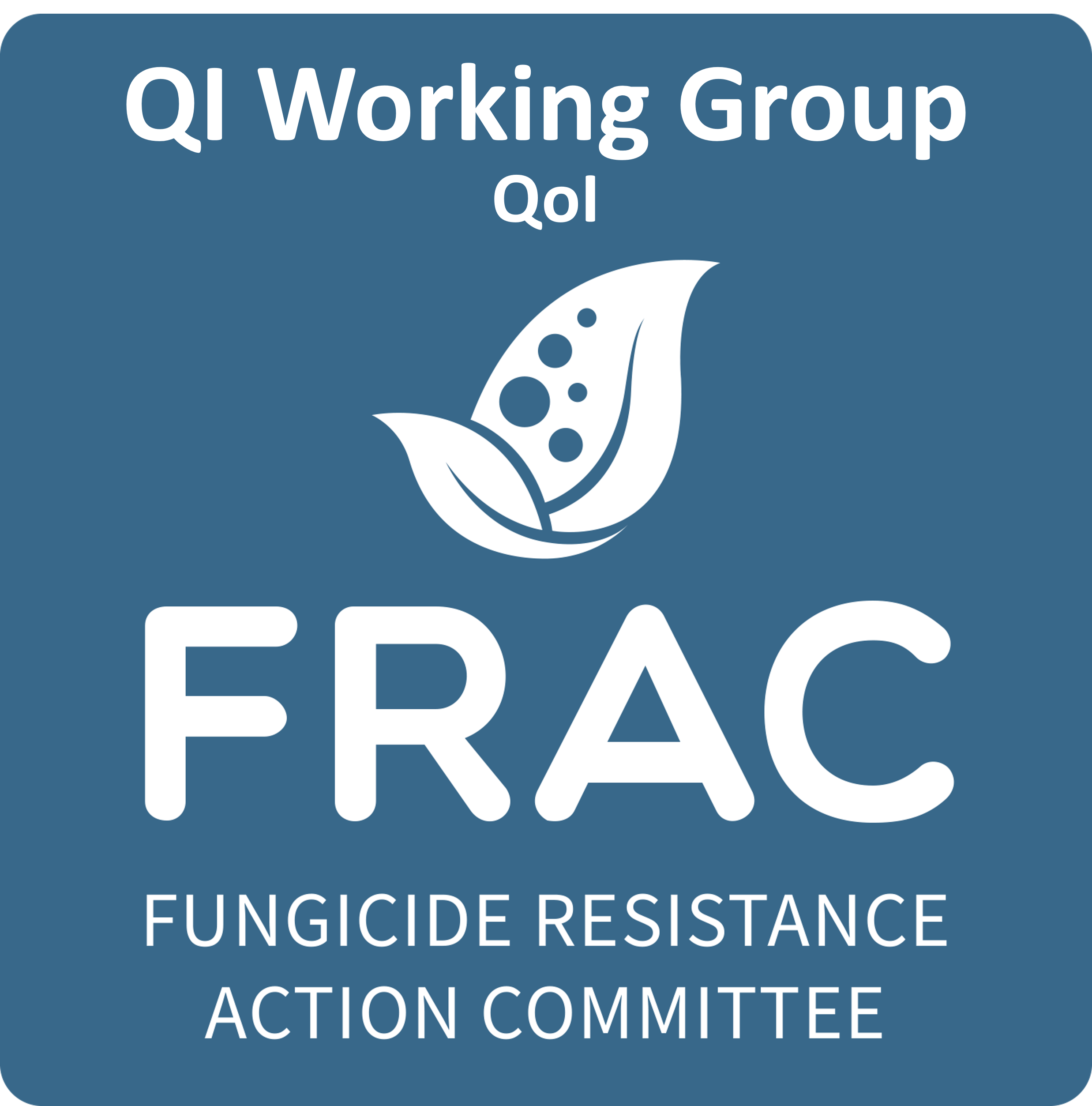The Qo fungicides inhibit plant pathogens by blocking the pathogens ability to produce energy. They do this by blocking the transfer of electrons at the Quinone "outside" site of the bc1 complex (complex III in the electron transport chain). There are two other fungicidal target sites at complex III, the Quionone "inside" (Qi) site (FRAC group 21) and the Quinone "outside" Stigmatellin binding (QoS) sub site (FRAC group 45). The members of the Qo group (FRAC group 11) are cross-resistant with each other but are not cross-resistant with members of the QiI (FRAC group 21) or QoSI (FRAC group 45).
The QoIs are active against a broad range of plant pathogens including representatives of all three important genera of plant pathogens, the ascomycetes, basidiomycetes and oomycetes. Most of the members of the class are registered broadly on a large number of crops although a few members are registered for use on a narrower spectrum of crops and diseases. As each member of the group has its particular strengths, label recommendations for specific products should always be followed.
The first members of the QoIs were launched in 1996. Isolates of Blumeria graminis f sp. tritici (Sierotzki et al. 2000) and Plasmopara viticola (Heaney et al. 2000) resistant to QoIs were found a short time later. They were found to have a mutation in the cytochrome b gene that caused the protein to change from Gly to Ala at position 143 (G143A). For a list of plant pathogens where isolates resistant to QoIs were found see Species with QoI Resistance (Status Dec. 2012).
